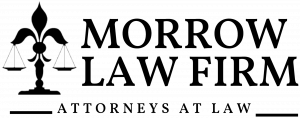
Dealing with Fault Disputes in Multiple-Car Collisions in Louisiana
Fault disputes can complicate insurance claims, liability determinations, and compensation recovery.
John Michael Morrow, Jr., a lawyer at Morrow Law Firm in Opelousas, Louisiana, highlights the importance of understanding the legal and procedural challenges associated with multi-vehicle accidents. “In multiple-car collisions, liability is rarely clear-cut. Accurately determining fault requires analyzing evidence, understanding state laws, and evaluating how each driver’s actions contributed to the accident.”
Understanding Louisiana’s Comparative Fault Law
Louisiana follows a comparative fault system, meaning fault can be shared among multiple parties. Under this law, each driver involved in the accident can be assigned a percentage of fault based on their level of responsibility. Compensation for damages is reduced proportionately by the percentage of fault assigned to the claimant.
For example, if a driver is found to be 30% at fault, any compensation awarded for injuries or property damage would be reduced by 30%. Comparative fault ensures that liability is distributed fairly but also introduces complications when determining the exact contributions of each party to the collision.
Factors Contributing to Fault in Multi-Car Collisions
Multi-car accidents often occur in high-traffic situations, such as congested highways, intersections, or during inclement weather. Determining fault requires examining several factors, including:
Negligent Driving Behaviors
Speeding, tailgating, distracted driving, and failing to follow traffic signals are common contributors to multi-car collisions. Evidence such as traffic camera footage, police reports, and witness statements can help establish whether these behaviors played a role.
Chain Reactions
Rear-end collisions in multi-car pileups often involve chain reactions. If one vehicle strikes another, the impact may push that vehicle into a third car, creating a domino effect. Determining who initiated the collision is critical to assigning fault.
Weather and Road Conditions
Poor road conditions, wet pavement, or reduced visibility can contribute to multi-car accidents. However, drivers are still responsible for operating their vehicles safely under prevailing conditions.
Mechanical Failures
Brake malfunctions, tire blowouts, or other mechanical issues can sometimes trigger multi-car crashes. In these cases, liability may extend to vehicle manufacturers, mechanics, or other third parties responsible for maintenance.
External Factors
Construction zones, debris on the road, or poorly marked lanes can complicate fault determinations. These factors may shift some liability to governmental entities or contractors responsible for road maintenance.
Challenges in Fault Disputes
Determining liability in a multi-car collision often involves conflicting accounts of what happened. Each driver may provide a different version of events, making it difficult to establish a clear chain of responsibility.
Common challenges include:
Lack of Clear Evidence: Without traffic cameras, dashcams, or witness statements, determining who initiated the collision can be difficult.
Multiple Negligent Drivers: When more than one driver contributes to the crash, assigning fault percentages becomes more complex.
Insurance Company Disputes: Insurers may attempt to shift blame to reduce their payouts, further complicating the claims process.
These disputes can delay settlements and leave individuals uncertain about their rights and responsibilities.
Proving Fault in Multi-Car Collisions
Successfully proving fault in multi-car accidents requires gathering and analyzing substantial evidence. Key steps include:
Collecting Physical Evidence
Skid marks, vehicle positions, and damage patterns often provide clues about how the collision occurred. Accident reconstruction experts can use this evidence to recreate the sequence of events.
Obtaining Witness Statements
Eyewitness accounts help clarify what happened, especially when drivers provide conflicting information. Neutral third parties are often valuable in fault determinations.
Reviewing Police Reports
Law enforcement officers document details of the crash, including statements from drivers, road conditions, and any traffic violations. Police reports serve as critical evidence in determining liability.
Utilizing Technology
Traffic camera footage, dashcam recordings, and event data recorders (black boxes) from vehicles can offer objective evidence of driver behavior, vehicle speeds, and braking patterns.
Considering Expert Analysis
Accident reconstruction specialists can analyze evidence to determine the cause and sequence of the collision. Their findings often help clarify fault when disputes arise.
Legal and Insurance Considerations
Fault disputes in multiple-car collisions often lead to prolonged negotiations with insurance companies. Insurers will conduct their own investigations to determine liability and may assign fault percentages that differ from initial assessments. Disagreements over fault can impact compensation for medical expenses, vehicle repairs, and other damages.
Louisiana’s comparative fault law allows injured parties to recover damages even if they are partially at fault. However, the amount of compensation is directly tied to the degree of fault assigned, underscoring the importance of accurate liability determinations.
Steps to Take After a Multi-Car Collision
When involved in a multiple-car accident, taking the following steps helps protect rights and strengthens claims:
Seek Medical Attention: Prioritize medical care for any injuries. Documentation of injuries is critical for claims.
Document the Scene: Take photos of the vehicles, road conditions, and any visible injuries. Record details of the accident while they are still fresh.
Collect Contact Information: Obtain contact details from other drivers, passengers, and witnesses.
Request a Police Report: Ensure law enforcement documents the scene and creates an official report.
Notify Insurance Providers: Report the accident to insurance companies but avoid admitting fault or speculating about the cause.
Accurate documentation and professional legal guidance can help resolve fault disputes and secure fair compensation.
Conclusion
Multi-car collisions present unique challenges in determining fault and recovering compensation. Louisiana’s comparative fault system requires a detailed analysis of evidence to assign liability accurately. By understanding the complexities of multi-car accidents, drivers can take steps to protect their rights, navigate insurance claims effectively, and ensure a fair resolution.
Morgan Thomas
Rhino Digital, LLC
+1 504-875-5036
email us here
Visit us on social media:
Facebook
Distribution channels: Culture, Society & Lifestyle, Insurance Industry, Law
Legal Disclaimer:
EIN Presswire provides this news content "as is" without warranty of any kind. We do not accept any responsibility or liability for the accuracy, content, images, videos, licenses, completeness, legality, or reliability of the information contained in this article. If you have any complaints or copyright issues related to this article, kindly contact the author above.
Submit your press release

